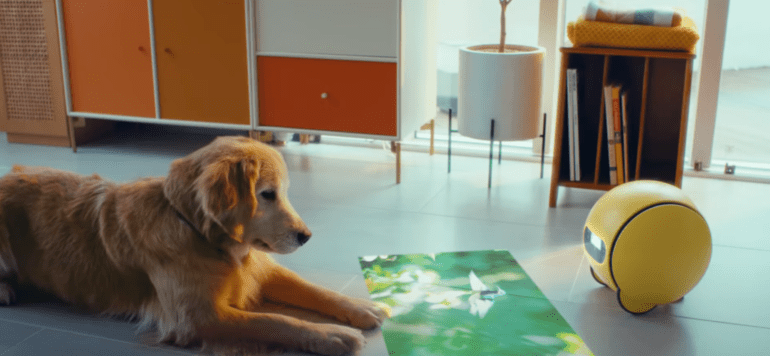TL;DR:
- Samsung reintroduces Ballie, the spherical home robot, with significant AI upgrades at CES 2024.
- The new Ballie boasts a longer-lasting battery, spatial lidar sensor, and a 1080p projector for versatile functionality.
- It responds to voice commands and text messages, offering user-friendly control options.
- Ballie can control smart lights, older devices, and even map a home’s floor plan.
- Samsung envisions advanced features like reminders, remote medical services, and personalized interactions, but specifics remain undisclosed.
Main AI News:
Samsung has brought back its spherical home robot, Ballie, making a grand return at CES 2024, and it’s not the same old Ballie from 2020. The latest iteration boasts cutting-edge AI enhancements, aligning itself with the evolving trends in technology.
The reimagined Ballie, showcased during Samsung’s CES 2024 press conference in Las Vegas, maintains its bowling ball-sized form, now equipped with a robust battery capable of lasting two to three hours. What truly sets Ballie apart are its advanced features, including a spatial lidar sensor and a 1080p projector equipped with two lenses, enabling it to project movies, facilitate video calls, and even serve as a secondary PC monitor.
Samsung states, “Use Ballie to project images and stream content on walls, and it can automatically adjust the picture based on the wall distance and lighting conditions. It can automatically detect people’s posture and facial angle and adjust the optimal projection angle for you.”
Controlling Ballie has become more intuitive than ever, as it responds to voice commands and text message requests, such as “play a movie on the nearest wall.” In the latter case, Ballie collaborates with a chatbot to confirm requests before executing them.
In keeping with its class of home robots, Ballie can seamlessly activate smart lights and control “non-smart” devices like air conditioners and older TVs through its built-in infrared transmitter. Furthermore, it can meticulously map a floor plan, identifying the location of smart devices within a home.
Samsung’s vision extends beyond these fundamental functions, encompassing features such as automatic reminders to attend to household plants, offering access to remote medical services for older residents, and personalization based on the presence of individuals nearby. Samsung highlights, “With its built-in front and rear camera, Ballie can detect and analyze its surroundings and learn recurring user patterns.”
However, specific details regarding these features, along with Ballie’s availability and pricing, remain undisclosed.
The pivotal question that looms is whether these impressive features will be enough to entice homeowners to embrace Ballie when it eventually hits the market. Home robots have historically faced challenges in gaining widespread adoption, as evidenced by Amazon’s recent endeavors and the unfortunate discontinuation of Mayfield Robotics, which aimed to partner with Bosch in delivering a home robot but ceased operations without fulfilling customer orders.
Conclusion:
Samsung’s revamped Ballie home robot showcases significant advancements in AI technology, promising enhanced convenience and utility for homeowners. However, the success of this product in the market will depend on factors such as pricing, availability, and the ability to deliver on its ambitious features. The competition in the home robot market remains fierce, with historical challenges in achieving widespread adoption, as seen in the case of Amazon and Mayfield Robotics. Samsung’s Ballie has the potential to disrupt this market, but its ultimate fate will be determined by its execution and market positioning.

